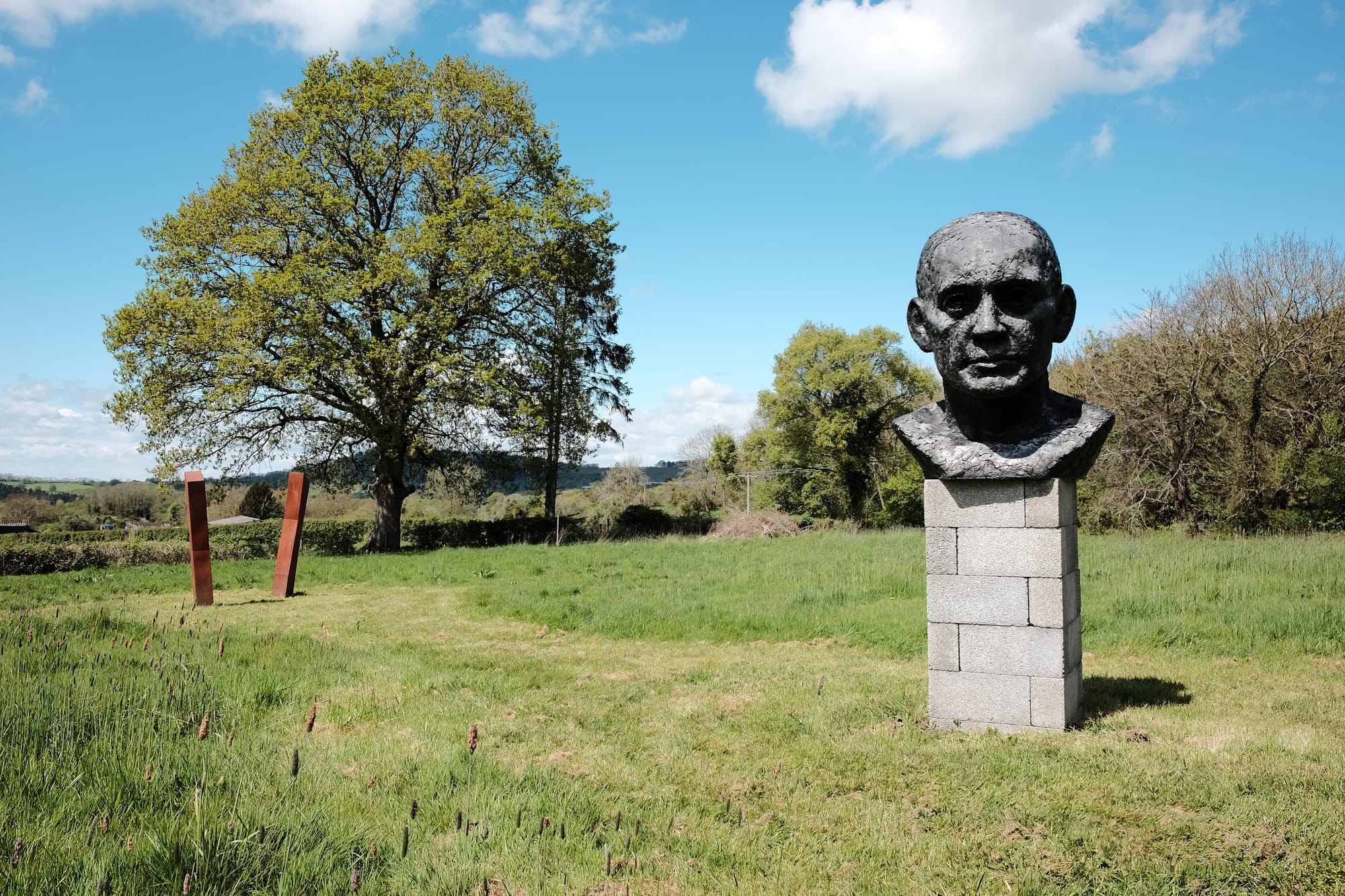Walking the sculptor’s landscape
A stroll around Canwood Gallery reveals the power of art and nature.

We stood on the neatly mown grass waiting for a giant metallic seed pod to open. Slowly, to the sound of running water, the silver outer case parted to reveal a spherical golden seed within. Then the process reversed and the seed was again hidden by its casing.
This was Revelation, a remarkable water-powered sculpture by Angela Connor, now installed at the Canwood Gallery in rural Herefordshire. We had seen Revelation before, but no two visits to Canwood and its meadows of modern sculptures are ever the same.
Last time we came, the sun was high and the wildflowers were in full bloom — setting the artworks against a bright tapestry. This time we were earlier in the year and in the day. The low sun glinted on Revelation’s metallic structure and the ripples from the pool in which the sculpture sits were reflected on its sides.
Sculptor Barbara Hepworth talked about the landscape of sculpture as ‘one of ever-changing space and light where forms reveal themselves in new aspects as the sun rises and sets, and the moon comes up’. This, she said, was ‘a world of infinite subtle meaning’. To visit Canwood is to explore this world.
The constant interplay between art and nature is soothing, like watching waves crash onto a beach or the wind whip trees into a dance. I could feel myself shedding the stresses of a busy week. A couple more hours of this and I could leave them behind in the long grass like a discarded snakeskin.

This interplay is why I'd rather see sculpture in a Herefordshire field than in a white-walled gallery. Barbara Hepworth agreed. She said that when she envisaged the perfect settings for sculpture, she mostly thought of those that were ‘outside and related to the landscape’.
Barbara’s work features prominently at the Yorkshire Sculpture Park, which we’ve also visited. Canwood is on a much smaller scale but much closer to home. The fact that it exists in this quiet corner of Herefordshire is down to a man with a remarkable story.
In the 1970s farmer Stephen Dale became critically ill with leukaemia. He was sent to Barts hospital in London in a last-ditch attempt to save his life by taking part in a medical trial. In between gruelling treatments, Stephen would venture out to art galleries. One of these excursions was to Tate Modern. It changed his life and sparked a passion for modern art.
Stephen vowed to build a gallery in Herefordshire where people could experience interesting art for free. That’s exactly what he's done, selling much of his land to fund it and giving profits from sales of artworks to Barts hospital.
Was it the drugs tested on Stephen that got him through his illness, or the dream of opening the gallery? Standing in Canwood's meadows it's tempting to believe in the healing power of art and nature.

